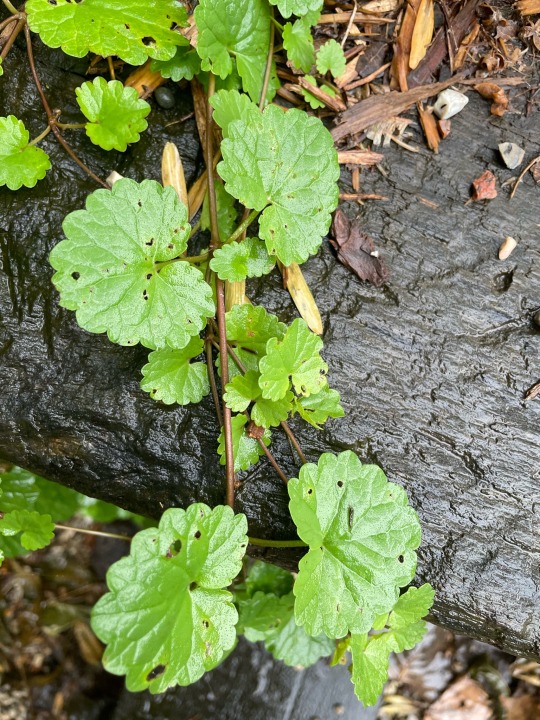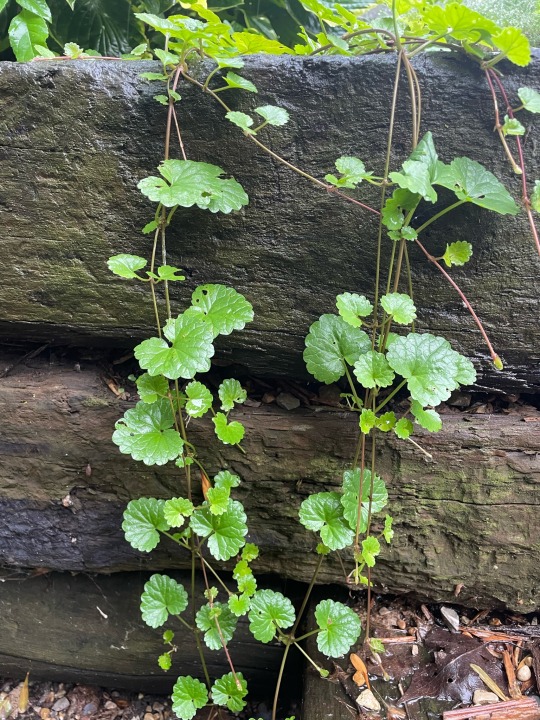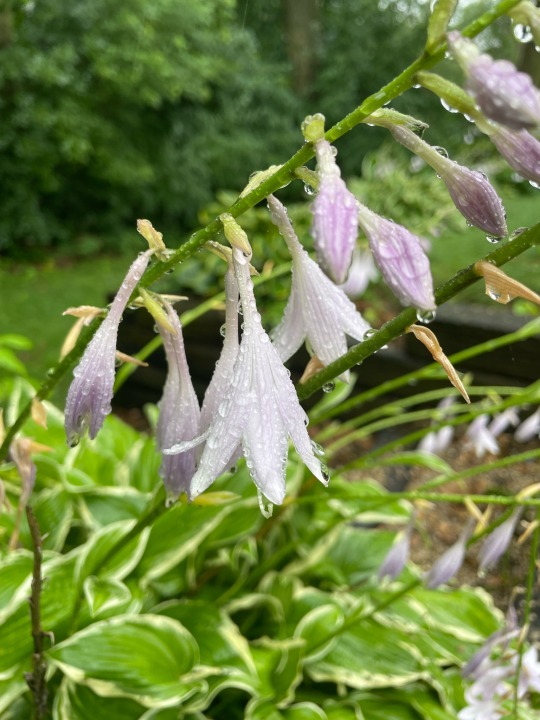Text
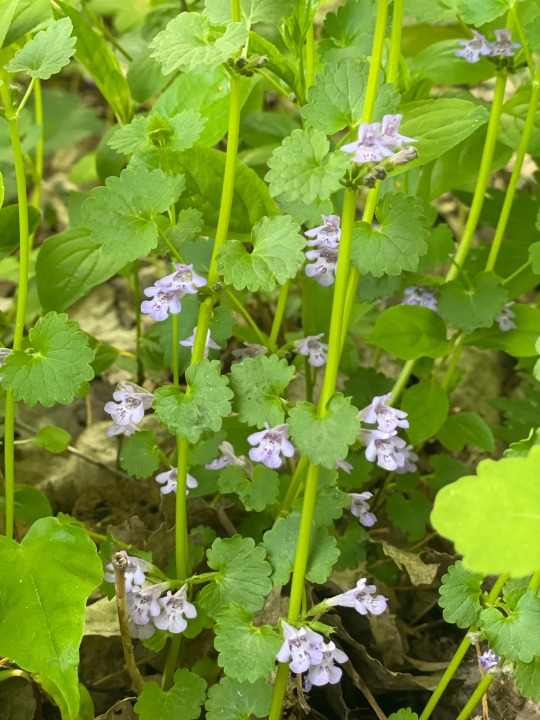
Creeping Charlie in full bloom
3 notes
·
View notes
Text
So after this steeped for most of the day, I strained it, added some vinegar and tea tree oil, and poured it into a spray bottle. I say this is fairly effective! I haven’t tested how long it lasts, but when i wear it in the morning while gardening/foraging or managing the woods, i don’t get eaten up like i usually do. The two bites i have were given when i wasn’t wearing it or never put on more when going outside a second time.

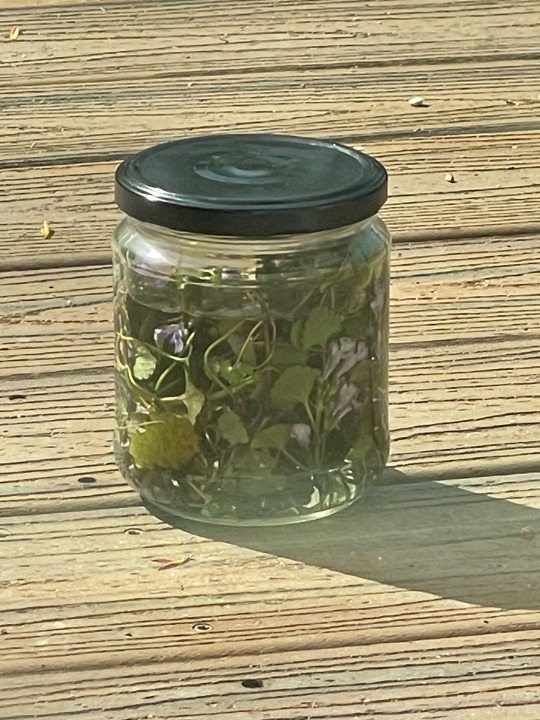
Steeping some Creeping Charlie for my first attempt at a bug spray.
21 notes
·
View notes
Text
[ID: A long and tall tree trunk, surrounded by other tree branches. On the trunk are three holes burrowed by animals, spaced from one another vertically.]

2 notes
·
View notes
Text

2 notes
·
View notes
Text

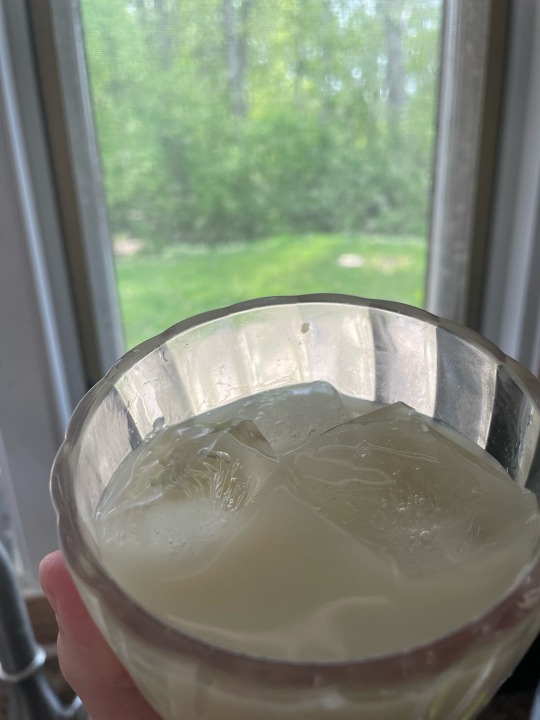
lilac milk tea, i boiled a 1/2 cup of water and then steeped about two bunches of lilacs for 7 minutes. I added my sweetener, poured it over a small cup with ice and then filled the rest with milk.
not shown: The Only Thing They Fear Is You blasting in my headphones as i made this.
5 notes
·
View notes
Text
i keep telling myself i don’t need to forage and/or process herbs every morning since i need a break but then i just forage and process anyway because the pretty plants are RIGHT THERE!!! i can just PICK THEM!!!
6 notes
·
View notes
Text


Steeping some Creeping Charlie for my first attempt at a bug spray.
21 notes
·
View notes
Text
MEDIEVAL WOMEN AS PROVIDERS OF HEALTH CARE
“…While a formal education in medicine was the preserve of men in the Middle Ages, and women were not licensed, not all medical practitioners were academically trained and Green warns rightly against only recognising the activities of ‘explicitly labelled practitioners’. In England, an example of a woman saint being described as ‘benedicta medica’ [the blessed doctor] can be found in Goscelin of St Bertin’s late eleventh-century account of the visionary healing from scrofula of Ælfgifu, abbess of Wilton, by the royal saint Edith of Wilton (d. c. 986).
However this is a posthumous miracle, and Goscelin does not attribute the title or similar healing activities to Edith in his earlier narrative of her life. Nevertheless, even if women medical practitioners were seldom formally recognised in such terms, women did contribute to scholarly discourse on medicine.
While the attribution of women’s health care texts to the putative female physician Trotula of Salerno is problematic, the abbess and visionary Hildegard of Bingen is famous for two medical works: an encyclopaedia of the natural world, Physica, which includes an extensive herbarium, or description of the medicinal properties of plants; and her compilation of medical advice, Causae et Curae.
The twelfth century however seems to have been exceptional in this respect, and according to Green in Making Women’s Medicine Masculine, women’s engagement with medical textual culture declined in the later Middle Ages, and their access to handbooks on healthcare was severely limited. While some exceptional women, including the mid fourteenth-century Cecilia of Oxford, employed by Philippa of Hainault, wife of Edward III, even practised as surgeons, most engaged in a range of medical practices that were not identified in professional terms, including midwifery, wet nursing and nursing.
…Margery Kempe provides a particularly interesting, and potentially anomalous or atypical, example of the sort of expectations that circulated around female involvement in health care in late medieval England, because although Kempe was a married laywoman, she had a conversion experience as an adult, and thereafter lived a deeply religious life, which was expressed in her distinctive dress, her diet, her frequent pilgrimages, her prayers and her visions and affective piety.
In this respect, and similar to vowesses, beguines and lay anchoresses, Kempe blurs the boundary between the laywoman and the woman religious. Her Book records in considerable detail the hostility that her unconventional religious life generated, and her treatment of her husband is no exception. When the increasing frail John Kempe fell down stairs, his wife was blamed for neglecting him and thus for failing in her duties: ‘And þan þe pepil seyd, ȝyf he deyd [died], hys wyfe was worthy to ben hangyn for hys deth, for-as-meche as sche myth a kept hym & dede not.’
Kempe represents caring for her senile husband – in typical effective detail – not as a vocation, but as an act of penance, but the reality must have been that nursing was a key element of medieval housewifery, and that fulfilling this role was expected of women. Women within the household also engaged in practices sometimes termed unlearned or popular, such as herbalism. Indeed, as we will see later in this article in the examples found in the Paston letters, the kitchen garden or herber was a major source of supplies for medieval medical treatments.
Keep reading
50 notes
·
View notes
Text
I don’t think dandelions are weeds. I think dandelions are free flowers that four year olds can pick for their mommies
76K notes
·
View notes
Text
Sun tea (for any herbal mixture)
Tools:
-one gallon glass tea dispenser
-the sun
Ingredients:
-appropriate amount of herbs for a one gallon mix. I typically use 10-11 tea bags, or 10-11 tbsp of dried herbs.
-preferred sweetener. I use Sweetleaf stevia drops and add it in after the brewing is done. If you want to add dried stevia leaf instead, follow previous ingredient instructions. For sugar or honey, mix the desired amount with a little bit of hot water and add it to the mixture after brewing is complete.
- A gallon of water. If serving immediately that day for a gathering, add in less water to make room for ice.
Instructions:
Fill up glass dispenser with desired amount of water. Place herbs (in tea bags, or in cheesecloth/hemp cloth sacs if loose leaf) into the water, and use the lid to place the strings and hold bags in place.
Place dispenser somewhere in a sunny spot. It is preferred to do so in late morning or noon, when the sun is higher in the sky.
Leave in the sunlight for 2-3 hours. Any longer than this and you risk contamination from bacteria fermenting in the tea.
Bring inside and remove tea bags. Squeeze the herbs out into the dispenser.
Add sweetener if not added already. Or you can leave it unsweetened and only sweeten individual servings.
Place the dispenser into the fridge/cooler to chill. If serving immediately, add ice cubes.
Enjoy!
3 notes
·
View notes
Text
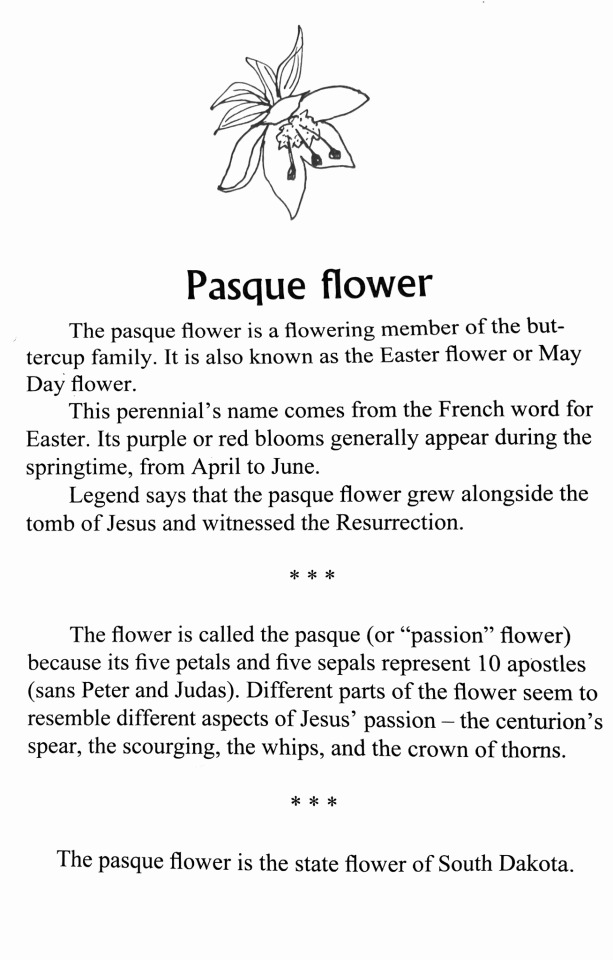
[ID: a sketch of the pasque flower sits above text discussing it’s history. It reads:
The pasque flower is a flowing member of the buttercup family. It is also known as the Easter flower or May Day flower.
This perennial’s name comes from the French word of Easter. Its purple or red blooms generally appear in the springtime, from April to June.
Legend says that the pasque flower grew alongside the tomb of Jesus and witnessed the Resurrection.
The flower is called the pasque (or passion flower) because its five petals and five sepals represent 10 apostles (sans Peter and Judas). Different parts of the flower seem to resemble different aspects of Jesus’ Passion — the centurion’s spear, the scourging, the whips, and the crown of thorns.
The pasque flower is the state flower of South Dakota.]
#catholic#herbalism#historical herbalism#catholic herbalism#pasqueflower#passionflower#this herb is actually popular for relaxation and sleep teas!
24 notes
·
View notes
Text

OK i guess i will continue to macrodose birds
33K notes
·
View notes
Quote
Most High, all powerful, good Lord,
Yours are the praises, the glory, the honour, and all blessing.
To You alone, Most High, do they belong,
and no man is worthy to mention Your name.
Be praised, my Lord, through all your creatures,
especially through my lord Brother Sun,
who brings the day; and you give light through him.
And he is beautiful and radiant in all his splendour!
Of you, Most High, he bears the likeness.
Praised be You, my Lord, through Sister Moon and the stars,
in heaven you formed them clear and precious and beautiful.
Praised be You, my Lord, through Brother Wind,
and through the air, cloudy and serene,
and every kind of weather through which
You give sustenance to Your creatures.
Praised be You, my Lord, through Sister Water,
which is very useful and humble and precious and chaste.
Praised be You, my Lord, through Brother Fire,
through whom you light the night and he is beautiful
and playful and robust and strong.
Praised be You, my Lord, through Sister Mother Earth,
who sustains us and governs us and who produces
varied fruits with coloured flowers and herbs.
Praised be You, my Lord,
through those who give pardon for Your love,
and bear infirmity and tribulation.
Blessed are those who endure in peace
for by You, Most High, they shall be crowned.
Praised be You, my Lord,
through our Sister Bodily Death,
from whom no living man can escape.
Woe to those who die in mortal sin.
Blessed are those who will
find Your most holy will,
for the second death shall do them no harm.
Praise and bless my Lord,
and give Him thanks
and serve Him with great humility.
Laudes Creaturarum
4 notes
·
View notes
Text
my sisters and brothers in Christ be like “leaf good because God good” and experience the grace of love.
1 note
·
View note


